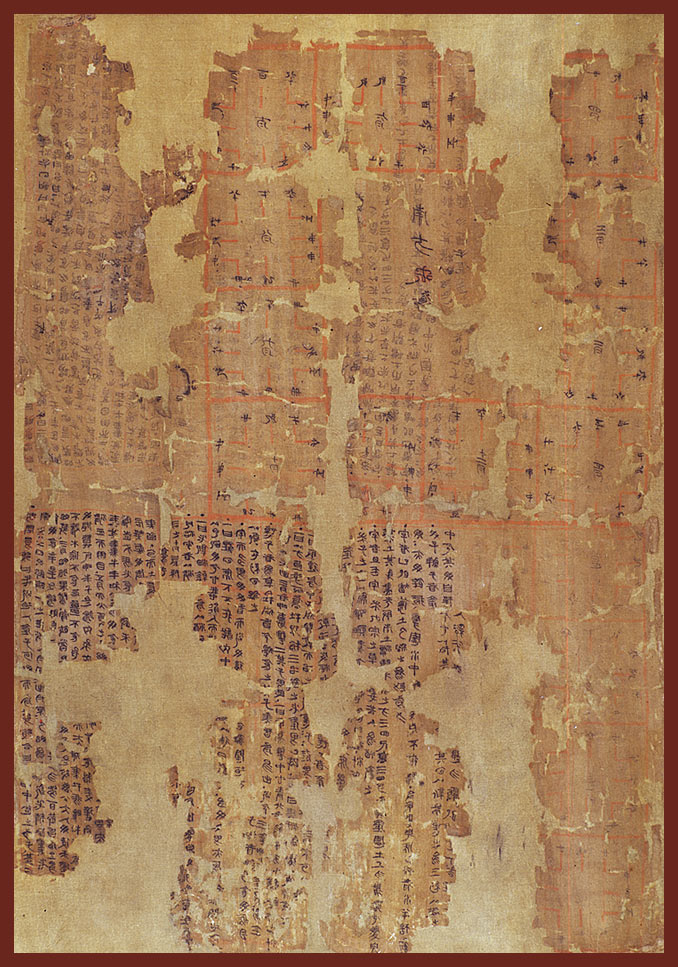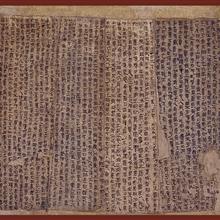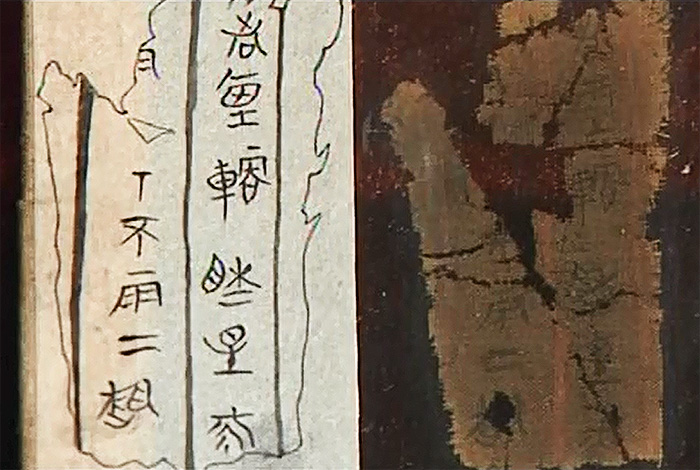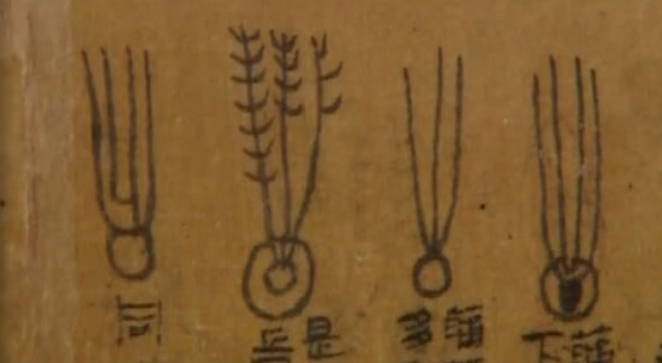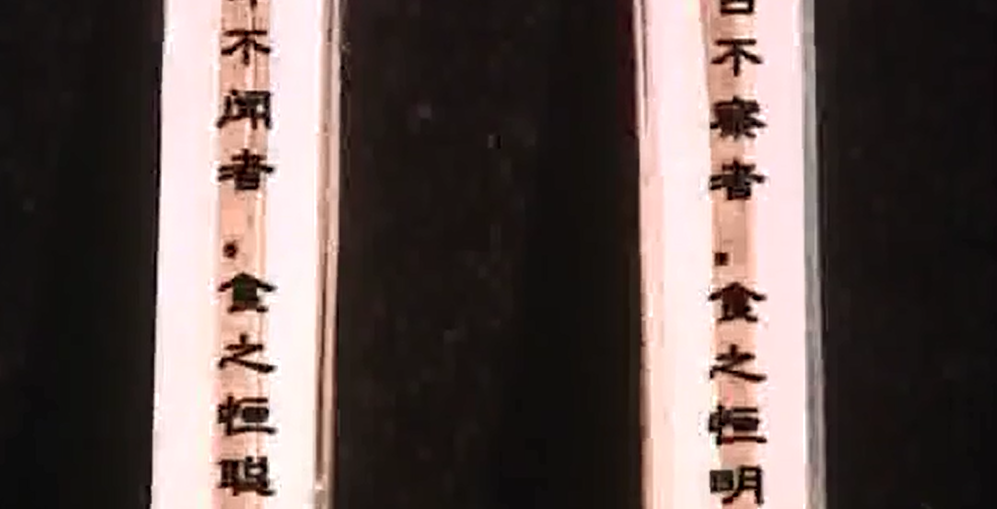Dimensions: Length: 48cm; width: 34cm;
Origin: Unearthed from Han Tomb 3 at Mawangdui, Changsha in 1973
This book is about such issues as pregnancy, antenatal training and eugenics. This book copied on silk originally had no title, but the Mawangdui silk book restoration group titled it Book of Pregnancy and Delivery on the basis of its contents. It is also called Book of Delivery and Classic of Delivery.
It discusses, through the discourse between two imaginary personages Yu and You Pin, issues such as pregnancy. The book purports that the woman, in her first month of pregnancy, should have delicate food and avoid spicy and fishy food; in the second month of pregnancy she should remain calm and avoid sexual intercourse. Such understandings are in accordance with modern scientific ideas.
You Pin also proposes that pregnancy can be achieved in the three days right after the completion of the woman’s menstrual period, with the first day intercourse producing a boy and the second day a girl. The most crucial period is the third month of pregnancy when the fetus is most susceptible to outside influence and the mother’s influence as well. The pregnant woman in this period should see more of stately gentlemen and nobilities, and should avoid meeting deformed persons and macaques and avoid eating rabbit. If the woman desires a boy, she should often play with bows and arrows and see stags and male tigers; if she desires a girl, she should often wear hairpins, earrings and pearls. This is called “internal images produce offspring”.
Some experts believe this is similar to the antenatal training popular today. The book urges pregnant women to see more of knowledgeable, virtuous and stately “gentlemen and nobilities” to make themselves spiritually happy so that the offspring will develop towards the direction of being eager to learn, healthy and good-looking. They should avoid meeting the ugly and the undersized lest these would cause the women to develop negative mood. Though tinged with metaphysic ideas, these are still early records of antenatal training among existing medical documents.
The book also records such contents as monthly fetus care method, treatment and burial of postnatal placenta, the choice of having a boy or a girl, and pregnancy method for infertile women. Even though some ideas are mingled with superstitious elements, small defects cannot obscure great virtues. Its discussion of such issues as selecting the time for pregnancy, the growth of the fetus, care during the pregnancy and postnatal care makes it still valuable for modern eugenics.
